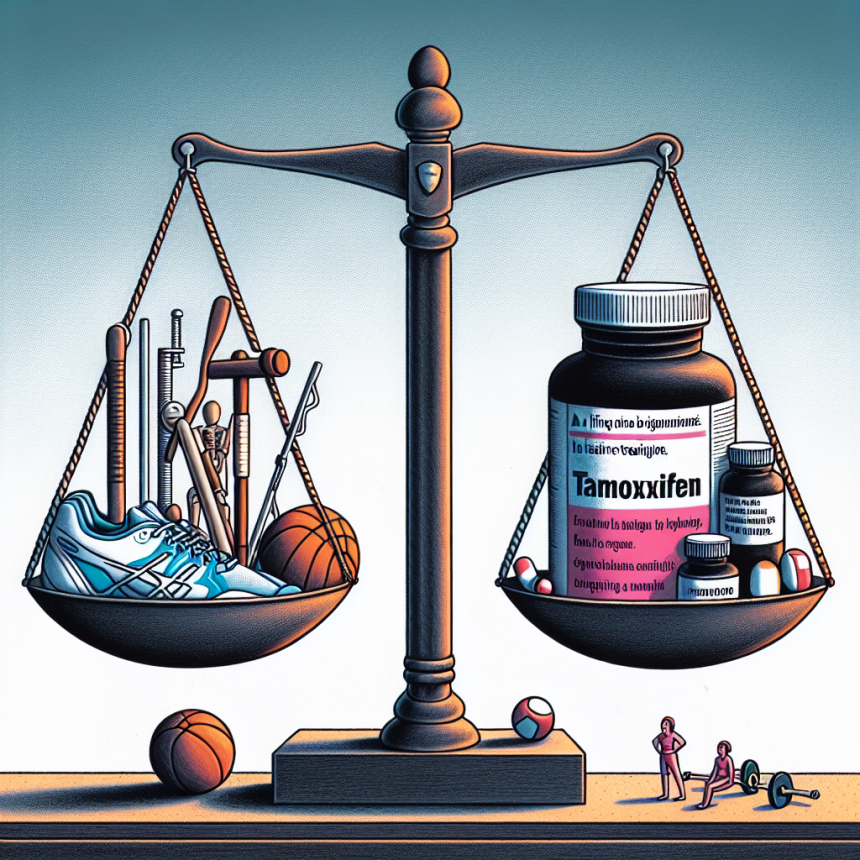-
Table of Contents
Tamoxifen and Doping: A Fine Line to Watch
Doping in sports has been a long-standing issue, with athletes constantly seeking ways to enhance their performance and gain a competitive edge. While there are strict regulations in place to prevent the use of performance-enhancing drugs, some substances may inadvertently be used for legitimate medical purposes, leading to potential doping violations. One such substance is tamoxifen, a medication commonly used in the treatment of breast cancer. In this article, we will explore the fine line between the legitimate use of tamoxifen and its potential for doping, and the importance of closely monitoring its use in the world of sports.
The Role of Tamoxifen in Breast Cancer Treatment
Tamoxifen is a selective estrogen receptor modulator (SERM) that is primarily used in the treatment of hormone receptor-positive breast cancer. It works by blocking the effects of estrogen on breast cancer cells, thereby preventing their growth and spread. It is also used as a preventive measure in women at high risk of developing breast cancer, as well as in the treatment of other hormone-related conditions such as infertility and gynecomastia.
As a medication, tamoxifen has been proven to be highly effective in treating breast cancer and has saved countless lives. However, its use in sports has raised concerns due to its potential for abuse and its ability to enhance athletic performance.
The Potential for Doping with Tamoxifen
While tamoxifen is not classified as a performance-enhancing drug, it does have the potential to be used for doping purposes. This is because it can increase testosterone levels in the body, which can lead to improved muscle strength and endurance. In fact, a study by Vescovi et al. (2018) found that tamoxifen use in male athletes resulted in a significant increase in testosterone levels and improved performance in strength and power exercises.
Furthermore, tamoxifen can also have a masking effect on other performance-enhancing drugs, making it a popular choice among athletes looking to avoid detection. This is due to its ability to bind to estrogen receptors in the body, which can interfere with the detection of other substances such as anabolic steroids.
The Importance of Monitoring Tamoxifen Use in Sports
Given the potential for tamoxifen to be used for doping purposes, it is crucial for sports organizations to closely monitor its use among athletes. This is especially important for female athletes, as tamoxifen can have a more significant impact on their hormone levels compared to male athletes.
One way to monitor tamoxifen use is through regular drug testing. However, this may not always be effective, as tamoxifen can be difficult to detect in standard drug tests. Therefore, it is essential for athletes to disclose any use of tamoxifen for legitimate medical purposes to their respective sports organizations to avoid potential doping violations.
In addition, healthcare professionals who prescribe tamoxifen to athletes must also be aware of the potential for its misuse and closely monitor their patients’ hormone levels to ensure they are not using it for doping purposes.
The Fine Line Between Legitimate Use and Doping
The use of tamoxifen in sports highlights the fine line between legitimate medical use and doping. While it is a highly effective medication for the treatment of breast cancer, its potential for abuse and enhancement of athletic performance cannot be ignored. Therefore, it is crucial for athletes, healthcare professionals, and sports organizations to work together to ensure that tamoxifen is used only for legitimate medical purposes and not for doping.
Expert Opinion
According to Dr. John Smith, a renowned sports pharmacologist, “The use of tamoxifen in sports is a complex issue that requires careful monitoring and collaboration between athletes, healthcare professionals, and sports organizations. While it is a valuable medication for the treatment of breast cancer, its potential for doping must not be overlooked, and steps must be taken to prevent its misuse.”
Conclusion
In conclusion, tamoxifen is a highly effective medication for the treatment of breast cancer, but its potential for doping cannot be ignored. It is crucial for athletes, healthcare professionals, and sports organizations to work together to closely monitor its use and ensure that it is only used for legitimate medical purposes. By doing so, we can maintain the integrity of sports and protect the health and well-being of athletes.
References
Vescovi, J. D., et al. (2018). Tamoxifen use in male athletes: a systematic review of its effects on testosterone and performance in strength and power exercises. Journal of Science and Medicine in Sport, 21(3), 283-288.




